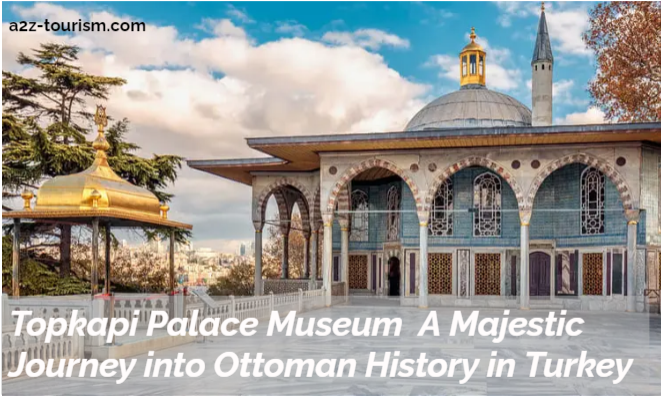Topkapi Palace Museum A Majestic Journey into Ottoman History in Turkey, nestled in the heart of Istanbul, Turkey, is a witching testament to the majesty and artistic heritage of the Ottoman Empire. With its admiration-inspiring armature, splendid innards, and expansive collections, this literal phenomenon continues to enthrall callers from across the globe.
Once the primary hearthstone of Ottoman sultans for nearly four centuries, Topkapi Palace now serves as a gallery, showcasing a vast array of vestiges, including precious jewelry, delicate pottery, and ancient calligraphies. Stepping through its majestic gates, callers are transported back in time, immersing themselves in the substance and opulent life of the Ottoman autocrats. The manor house’s sprawling demesne also features alluring amphitheaters, offering a serene retreat from the bustling megacity. Topkapi Palace stands as a living testament to Turkey’s rich annals and artistic prescription, inviting callers to claw into its witching history and expose the secrets of this freak villa.
literal Background
To completely grasp the significance of Topkapi Palace, one must claw into its alluring history. erected in the 15th century, the palace worked as the central mecca of power for the Ottoman sultans for nearly four centuries. The palace was more than just a political fort; it also represented the majesty and power of the empire. Over time, the palace passed multitudinous expansions, variations, and advancements, performing in a vast complex that displayed architectural styles from colorful ages.

Architectural Marvel Topkapi Palace
The Topkapi Palace stands as a testament to the majesty of Islamic and Ottoman armature, blending intricate designs and influences to produce a true admiration-inspiring structure. This architectural masterpiece encompasses a sprawling complex, conforming to strictly drafted yards, belvederes, halls, and auditoriums that punctuate the exceptional artificer of the crafters involved. crucial rudiments within the palace complex include the Imperial Gate, the Second Court, the Third Court, and the Harem, each boasting distinctive architectural features that allure callers.
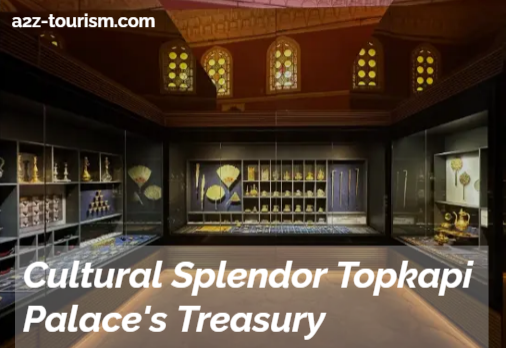
Cultural Splendor Topkapi Palace’s Treasury
At the heart of Topkapi Palace lies a treasure trove of art and murk, offering inestimable perceptivity into the rich artistic and cultural heritage of the Ottoman Empire. Within the palace’s gallery, a rich multifariousness of shows awaits, showcasing a different range of treasures. Callers can marvel at the stirring display of exquisite jewelry, magnificent robes, witching calligraphies, intricate artworks, redoubtable ordnance, and delicate china.
Among the numerous sections, the Treasury stands out as a lamp of substance, casing a glowing collection of precious rocks, including the famed Topkapi Dagger and the Spoonmaker’s Diamond, witching callers with their beauty and literal significance.
Gardens and Scenic Beauty
In addition to its architectural majesty and art collections, Topkapi Palace offers callers an alluring experience with its serene auditoriums and stirring views. The palace auditoriums, strictly landscaped and adorned with various flowers and cradles, give a tranquil oasis amidst the bustling megacity. Conterminous to the palace, Gülhane Park has become a cherished destination for both residents and callers likewise. This serene oasis provides a tranquil escape from the bustling megacity and affords stirring panoramic views of the Bosphorus. It has earned a character as a cherished retreat, attracting people seeking solace and a chance to immerse themselves in the demesne’s natural beauty.
Ticketing and Practical Information
To visit the Topkapi Palace Museum, callers are needed to buy tickets, which grant access to all the sections and exhibitions within the complex. Ticket prices may vary depending on factors such as age, nation, and the addition of special exhibitions. It’s judicious to check the sanctioned website or communicate with the gallery for over-to-date information regarding ticket vacuity, prices, and opening hours.
Opening Hours and Visiting Guidelines
To make the utmost of your visit to the Topkapi Palace Museum, it’s essential to familiarize yourself with its opening hours and visiting guidelines. The gallery is generally open to the public from Tuesday to Sunday, from 900a.m. to 500p.m. Still, it’s pivotal to check the sanctioned website or communicate with the gallery directly for the most up-to-date information, as opening hours may vary depending on the season or special events. Keep in mind that the gallery is closed on Mondays.
To ensure a smooth and pleasurable visit, it’s judicious to arrive beforehand in the morning or later in the autumn to avoid crowds. The Topkapi Palace Museum is a popular sightseer magnet, and during peak hours, the ranges can be relatively long. also, it’s recommended to buy tickets in advance online to skip the marking lines and save time.
The sensations of Topkapi Palace Museum
As callers step into the Topkapi Palace Museum, they’re saluted by a stirring display of architectural brilliance and opulent halls. Gauging a vast area, the gallery encompasses multitudinous sections and exhibits that vividly portray the vibrant angles of the Ottoman Empire.
A true highlight of the gallery is the Imperial Treasury, a remarkable show of jewelry that dazzles the senses. Within its walls, callers can marvel at an extraordinary collection of exquisitely drafted pieces adorned with precious rocks and intricate designs. The Topkapi Palace Museum also houses a poignant collection of proud robes, artillery, armor, calligraphies, and crockery, offering comprehensive sapience into the rich artistic and cultural heritage of the Ottoman Empire.
Guided tenures Unraveling the Secrets of the Palace
To completely appreciate the literal significance and cultural beauty of the Topkapi Palace Museum, embarking on a guided stint is largely recommended. Knowledgeable attendants lead callers through the palace’s different sections, furnishing witching narratives and stories that bring the history of the Ottoman Empire to life.
Visitors have the lone occasion to explore the Harem, a disadvantaged neighborhood of the palace that served as the abode for the sultans and their families. The Harem presents a beguiling peep into the close lives of the Ottoman autocrats, accentuating lavishly adorned chambers, enclosures, and entries. This exclusive area of the palace provides a witching sapience into the significance and intricacy of their particular residences, inviting callers to discover the luxurious surroundings and immerse themselves in the air of the Ottoman autocrats’ private realm.
The guided stint also takes callers through the Palace Kitchens, where they can learn about the culinary traditions of the Ottoman Empire and the phenomenon of the emotional collection of kitchenware and implements.
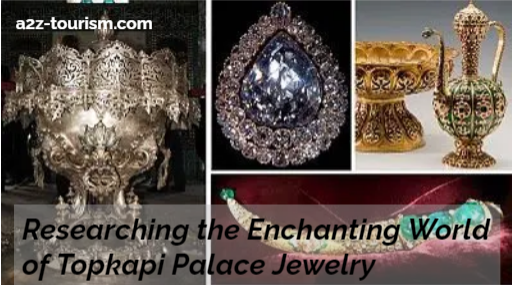
Researching the Enchanting World of Topkapi Palace Jewelry
Among the countless treasures bivouacked within the Topkapi Palace Museum, its jewelry library stands out as a testament to the aristocracy and handcraft of the Ottoman Empire. With a stunning array of radiant pieces, including diamond-caked laurels, ornate necklaces, and intricately designed irons, each item reflects the exquisite taste and artistic sensibilities of the Ottoman autocrats. Unveiling the Legendary Spoonmaker’s Diamond One of the most famed jewels in the collection is the Spoonmaker’s Diamond, a witching 86-carat gem with an extraordinary history. Legend has it that a humble spoon maker discovered the diamond while digging a well and ended it for a bare three diapers. moment, this exceptional diamond takes center stage in the Topkapi Palace Museum, alluring callers with its brilliance and witching backstory.
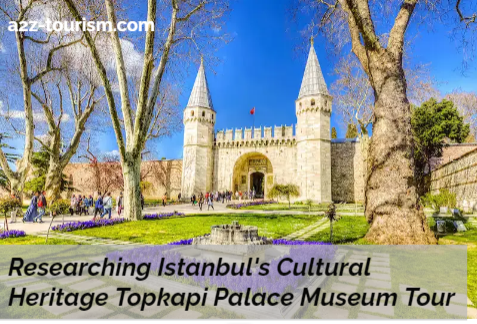
Researching Istanbul’s Cultural Heritage Topkapi Palace Museum Tour
For those seeking a deeper immersion into Istanbul’s rich artistic heritage, a comprehensive visit to the Topkapi Palace Museum is an excellent discretion. This moxie not only allows guests to explore the gallery’s arresting shows, but it ditto provides an occasion to claw into the vibrant history and architectural flashes of the municipality.
The trip generally begins with a visit to Hagia Sophia, a monumental and intricately designed structure that has converted from a church to a synagogue and now serves as a gallery. This UNESCO World Heritage point showcases a harmonious mix of intricate and Ottoman architectural styles. From there, the diary continues to the Blue Mosque, famed for its stirring blue tilework and graceful minarets.
After exploring these iconic milestones, the coming stop on the diary is the Topkapi Palace Museum, where callers can completely immerse themselves in the majesty of the Ottoman Empire. Knowledgeable attendants give precious perceptivity to the literal environment and cultural significance of the palace, enhancing the overall experience.
Annals of Topkapi Palace
The Topkapi Palace is steeped in a witching history that glasses the tumultuous trip of the Ottoman Empire. Construction of the palace began in 1459 under the orders of Sultan Mehmed the Conqueror, who wanted a grand hearthstone that would showcase the muscle and majesty of the conglomerate. Over the centuries, posterior sultans expanded and stretched the palace, performing in a sprawling complex of structures and yards.
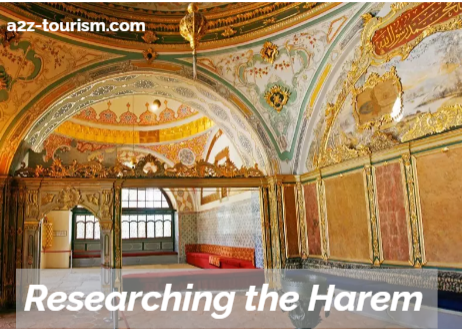
Researching the Harem
The stew, a mysterious and interesting section of Topkapi Palace, was the private living diggings of the sultan, his family, and his doxies. It was an isolated space where the sultan’s mama, women, and children abided. The lather housed hundreds of diggings, each intricately decorated, and it was a place where politics, love, and crew intertwined. Visitors to the Topkapi Palace now have to claw into this alluring chapter of history, gaining precious perceptivity into the lives of those who formerly abided within its walls.
Interior Splendor
Step inside Topkapi Palace, and you will be transported to a world of unequaled beauty and artificer. The manor house’s innards showcase the finest samples of Ottoman framing and design. From the stunning Iftariye Pavilion to the grand Imperial Council Chamber, each room is adorned with complicated pipework, gingerbread script, and exquisite artwork. The palace also harbors a witching collection of treasures, among them the ignominious Topkapi Dagger and the famed Spoonmaker’s Diamond, eliciting a range of feelings in those who behold them.
Opening Hours and Practical Information
To make the utmost of your visit to Topkapi Palace, it’s essential to plan your trip accordingly. The palace is generally open to the public from Tuesday to Sunday, with Mondays being a designated ending day. It’s judicious to check the sanctioned website or communicate with the palace for over-to-date information regarding opening hours, as they may vary. also, copping tickets in advance or arriving beforehand can help you avoid long ranges and ensure a smoother entry into the palace.
Navigating the Palace Complex
Topkapi Palace’s vast complex can be inviting for first-time callers, but sweat not, as a chart of the palace is readily available. The palace is divided into distinct sections, encompassing the First Courtyard, Second Courtyard, and Third yard, each casing unique lodestones and shows. A detailed chart will serve as your companion, leading you to the palace’s multitudinous highlights, similar to the Imperial Treasury, the Sacred Bones room, and the Sultan’s private chambers.
Sanctioned Website and further coffers
For the most accurate and over-to-date information about Topkapi Palace, it’s judicious to visit the sanctioned website. The website provides points about ticket prices, guided tours, special exhibitions, and any provisory closures or happenings.
likewise, for deeper perceptivity into the history and significance of the palace, estimable coffers similar to books, scholarly papers, and the Topkapi Palace Wikipedia runner can be immensely helpful.
Conclusion
The Topkapi Palace Museum in Istanbul stands as an aberrated testament to the royalty, significance, and cultural heritage of the Ottoman Empire. With its witching architectural beauty, rich hard heritage, and extensive art collections, it enthralls guests from all corners of the world. researching the palace and its vibrant sections allows one to immerse oneself in the bios of the Ottoman sultans, attest to the power and influence of the empire, and appreciate the artistic brightness of the menstruation.
From the mesmerizing jewelry collection to the serene yards, every corner of the palace offers an admiration of history and a deeper agreement of the commanding prescription of the Ottoman Empire.
A visit to the Topkapi Palace Museum isn’t only a disquisition of Istanbul’s artistic heritage but also an occasion to connect with the stories and achievements of a defunct period. Whether you’re fascinated by literal narratives, charmed by architectural sensations, or simply seeking a profound artistic experience, the Topkapi Palace Museum promises an indelible trip that will leave you with a lesser appreciation for the majesty and enduring heritage of the Ottoman Empire.
FAQs
What’s special about Topkapi Palace?
Topkapi Palace served as the primary hearthstone and executive headquarters of the Ottoman sultans for nearly four centuries. As the mecca of the Ottoman Empire’s authority, the Topkapi Palace bore substantiation to multitudinous significant political and cultural events. The manor house complex comprises animated yards, emotional auditoriums, graphic belvederes, and a variety of structures, showcasing a witching blend of architectural styles from disparate days.
How important is the entrance figure to Topkapi Palace?
As of my knowledge arrestment in September 2021, the entrance figure to Topkapi Palace was 100 Turkish lira for grown-ups. still, please note that prices may have changed, and it’s judicious to check the sanctioned website or communicate with the palace for the most up-to-date information.
Who lived in Topkapi Palace?
Topkapi Palace was inhabited by the Ottoman sultans and their families. It served as the primary stronghold for the ruling dynasty and functioned as the central seat of power for the Ottoman Empire.
Who owns Topkapi Palace now?
Topkapi Palace is presently a gallery and is possessed and operated by the Turkish Ministry of Culture and Tourism.
How old is the Quran in Topkapi Palace?
The Topkapi Palace houses several earthshaking Islamic dice, taking in an assemblage of Qurans. One of the most notable Qurans in the palace is known as the” Topkapi Manuscript.” It’s believed to be one of the oldest weathering duplicates of the Quran and dates back to the 7th century CE. Still, please note that the exact age and origins of the handwriting have been a subject of scholarly debate, and different inviting styles have yielded differing results.
What did Prophet Muhammad have in Topkapi Palace?
Topkapi Palace is known to house a collection of Islamic bones, some of which are associated with the Prophet Muhammad. These bones include particulars similar to his particular things, apparel, and hairs from his beard. especially, the palace’s Sacred Trusts section exhibits a selection of these deified particulars.

